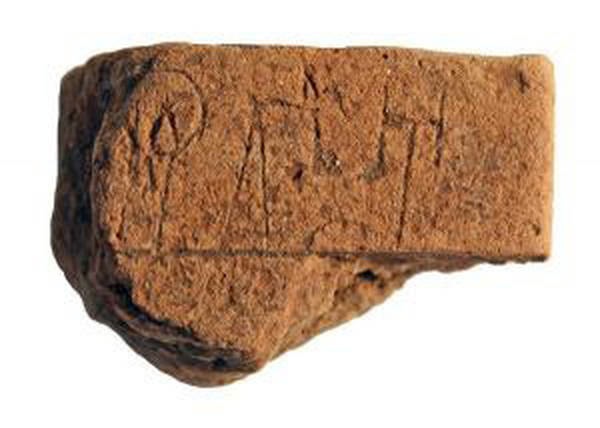There are enough significant archaeological discoveries made every year in Greece to fill entire museums. This was also the case in 2011, despite a drop in financing for research as a result of the economic crisis. The authoritative weekly To Vima (The Tribune) has drawn up a list of the ten most important archaeological discoveries of 2011.
The works, the publication says, were not listed according to their importance, as that can only be established after further studies.
The discoveries listed are as follows:
1) A small 2,500-year old wooden statue in perfect condition. The impressive find was made in the Sanctuary of Artemis in Vravrona during building works on the archaeological site’s drainage well. Other objects were found alongside the statuette, all of them dating from the 5th century BC.
2) A square jasper stamp, dark red in colour and bearing incisions in Minoan hieroglyphics, the oldest Minoan texts of Crete. The find, which the archaeologists Iris Tsachili and Eleni Papadopoulou say is very important, was made at the peak sanctuary of Mount Vrysinas in Rethymno, on the island of Crete.
3) The tombs of men buried alongside their animals, which came to light in the village of Mavropigi in Eordaia. The tombs contain 11 men and 16 animals (horses, dogs, oxen and a pig). The director of the office of Antiquities, Georgia Karamitrou-Mentesidi, says that the distinguishing feature of the necropolis is the large number of animals placed alongside the dead men.
4) A marble statue representing the god Hermes, in dimensions slightly larger than usual, the copy of a work from the 4th century BC from the studio of the great sculptor Polykleitos of Argos. The work was found in the small theatre of Epidaurus, during excavations close to the monument, and was probably sculpted around the 2nd century BC.
5) The oldest legible epigraph ever discovered on European soil. The text, written onto a clay slab in writing known as “linear B”, was carved around 3,500 years ago and discovered in the town of Iklaina in Messinia by the archaeologist Michalis Kosmopoulos.
6) The eye of Tutankhamen, a small golden jewel representing a human eye, which according to Professor Nikos Stompolidis, dates back to the 7th or 8th century BC, and is similar to the gold funereal mask of the famous Egyptian pharaoh. The object was found inside a jar in one of the tombs of the necropolis at Eleutherna, the most important archaeological site around the town of Rethymno, on the island of Crete.
7) A number of family tombs, which archaeologists believe were used for many generations, from the 10th to the 7th century BC, which were discovered in the town of Hlois, in the central Greek area of Velestinou. Buried inside the tombs along with the remains of the dead are a number of votive objects (spades, knives and vases of various shapes).
8) A copper statuette dating back to 1600 BC, which was found during excavations in Zominthos, on the Psiloritis mountains, the highest peak on the island of Crete. The statuette, known as “Minoitis”, is in a ceremonial position, with one hand covering its eyes as if to avoid being dazzled by the vision of the Divinity.
9) Dozens of fragments of Kouroi (statues of male adolescents), carved into opalescent Parian marble, which were found close to the sanctuary of Apollo on the tiny deserted island of Dispotikos, close to that of Antiparos. So far only 60 sculptures have been unearthed, including 5 Kouroi heads, one woman’s head and a further ten torsos. The latter include the statue of a Kouros with his hand folded on to the chest, a model that, according to the architect Giannos Kouragio, is only found in the sculpture studios of Paros on the 6th century BC.
10) A sanctuary dedicated to Artemis, perhaps the largest in Crete at 52 metres long and 19.6 metres wide, discovered in the town of Kefala. In the temple, says the archaeologist Nikos Panagiotakis, Artemis Skopelitida (who was from the island of Skopelos) was worshipped here, and both its architecture and dimensions suggest that it was at the time a sanctuary of great religious prestige.
(source: ANSA)
See all the latest news from Greece and the world at Greekreporter.com. Contact our newsroom to report an update or send your story, photos and videos. Follow GR on Google News and subscribe here to our daily email!




